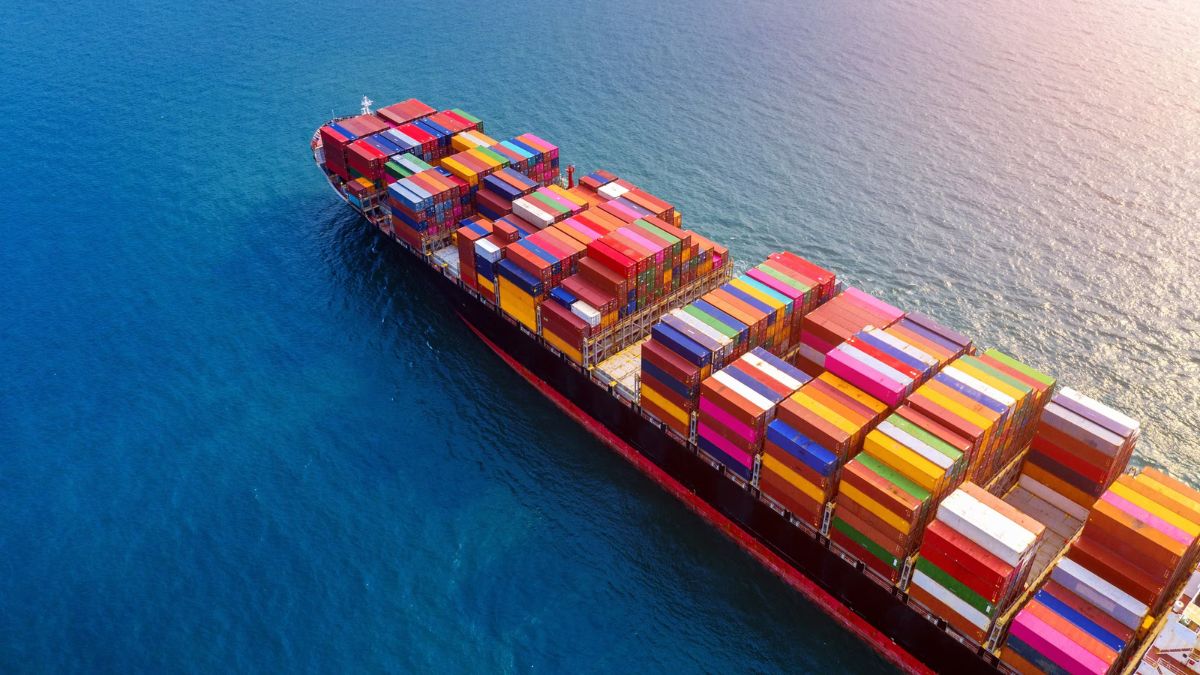<p>The latest tariff initiative from US President Donald Trump has ignited fresh concerns in the ocean shipping sector, as companies brace for disruptions that could ripple across global trade routes and logistics networks.</p>
<p>The American administration is poised to introduce “reciprocal tariffs” against countries imposing levies on US goods on Wednesday. This follows previous rounds of tariffs on imports from Mexico, China, and Canada—three of the largest US trading partners—as well as targeted measures on steel and automobiles.</p>
<p>Major container shipping firms, including MSC, Maersk, CMA CGM, and Hapag-Lloyd, which ferry goods for retail giants like Walmart, Target, and Home Depot, are preparing for potential turmoil, reported Reuters.</p>
<p>These companies operate within a $14 trillion industry that handles approximately 80 per cent of global trade, making them highly sensitive to tariff fluctuations.</p>
<p>”The implementation of stacked tariffs has led to mounting confusion,” said Blake Harden, vice president of international trade at the Retail Industry Leaders Association. “Companies have not had adequate time, certainty, and guidance they need to incorporate these changes and comply.”</p>
<p>The Trump administration’s frequent use of emergency powers to impose, revoke, and reinstate tariffs has left businesses struggling to anticipate costs.</p>
<p>”Importers don’t know from one week to the next what their duty cost is going to be,” said Kit Johnson, director of import compliance at John S. James Co., a customs brokerage firm that serves industries ranging from automotives to medical devices.</p>
<h3><strong>Supply Chain Disruptions Mount</strong></h3>
<p>Faced with uncertainty, some companies are turning to expensive air freight to move goods like automobiles, which would typically be transported via ocean routes. US container imports have surged in recent months as firms rush to stockpile products, including machinery, furniture, and pharmaceuticals, in an effort to sidestep tariffs.</p>
<p>Other transport methods are being deployed to compensate for ocean shipping disruptions. Vessels and aircraft are increasingly being used to transport goods such as European cars, Italian cheese and wine, and Irish pharmaceuticals to the US buyers.</p>
<p>On Tuesday, the cost to ship a 40-foot container from the Far East to the US West Coast climbed to $2,844, a one-day increase of nearly 16 per cent, the report said citing data from freight pricing platform Xeneta. Although still lower than last year’s rates—when disruptions from Houthi attacks on Red Sea routes first emerged—the spike highlights growing trade tensions.</p>
<p><strong>Also Read : <a title=”Who Is Poonam Gupta? The Newly Appointed RBI Deputy Governor” href=”https://news.abplive.com/business/who-is-poonam-gupta-the-newly-appointed-rbi-deputy-governor-ahead-of-rbi-mpc-1762378″ target=”_blank” rel=”noopener”>Who Is Poonam Gupta? The Newly Appointed RBI Deputy Governor</a></strong></p>
<h3><strong>Long-Term Impact on Trade and Logistics</strong></h3>
<p>While businesses scramble to front-load shipments, experts caution that such strategies offer only short-term relief. The compounded effects of retaliatory tariffs could stifle trade, leading to further economic strain.</p>
<p>Adding to concerns, Trump’s separate proposal to levy significant US port fees on vessels linked to China has raised alarms. Critics argued the move could harm domestic agricultural and energy exporters while also triggering logistical chaos at ports, with some overwhelmed by surging cargo and others left underutilised.</p>
<p>”You cannot make important decisions on your supply chain when the rules of the game keep changing,” said Peter Sand, chief analyst at Xeneta.</p>
<p>The economic repercussions are already emerging. Concerns over tariffs have dampened a nascent recovery in the US manufacturing sector, according to a survey by the Institute for Supply Management. Meanwhile, S&P Global Market Intelligence forecasts a 0.7 per cent decline in US ocean container freight imports in 2025.</p>
<p>”While there is still strong growth in the first quarter, this is expected to reverse in the second quarter of 2025 as tariffs bite,” S&P noted.</p>
<p>Additionally, US Customs and Border Protection is working to update its systems to accommodate the shifting tariff landscape. A February plan to start collecting duties on low-value goods from retailers like Temu and Shein was delayed after packages began accumulating at New York’s John F. Kennedy International Airport.</p>
World
Trump’s Tariff Plan Spurs Shipping Uncertainty, Experts Warn Global Trade at Risk
by aweeincm

Recent Post

S Jaishankar’s “Cherry-Picking” Jab At Dhaka’s Yunus Over Northeast Remark
External Affairs Minister S Jaishankar today delivered a sharp rebuttal ... Read more

Supreme Court Sacks 25,000 Teachers, Huge Blow To Mamata Banerjee Government
In a massive loss of face to the Mamata Banerjee ... Read more

Explained: All You Want To Know About Waqf Row
With Lok Sabha clearing the Waqf Amendment Bill late last ... Read more

“Left Trinamool Because…”: Ex MP After Court Setback For Mamata Banerjee
As the Mamata Banerjee government suffered a setback in the ... Read more